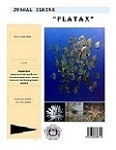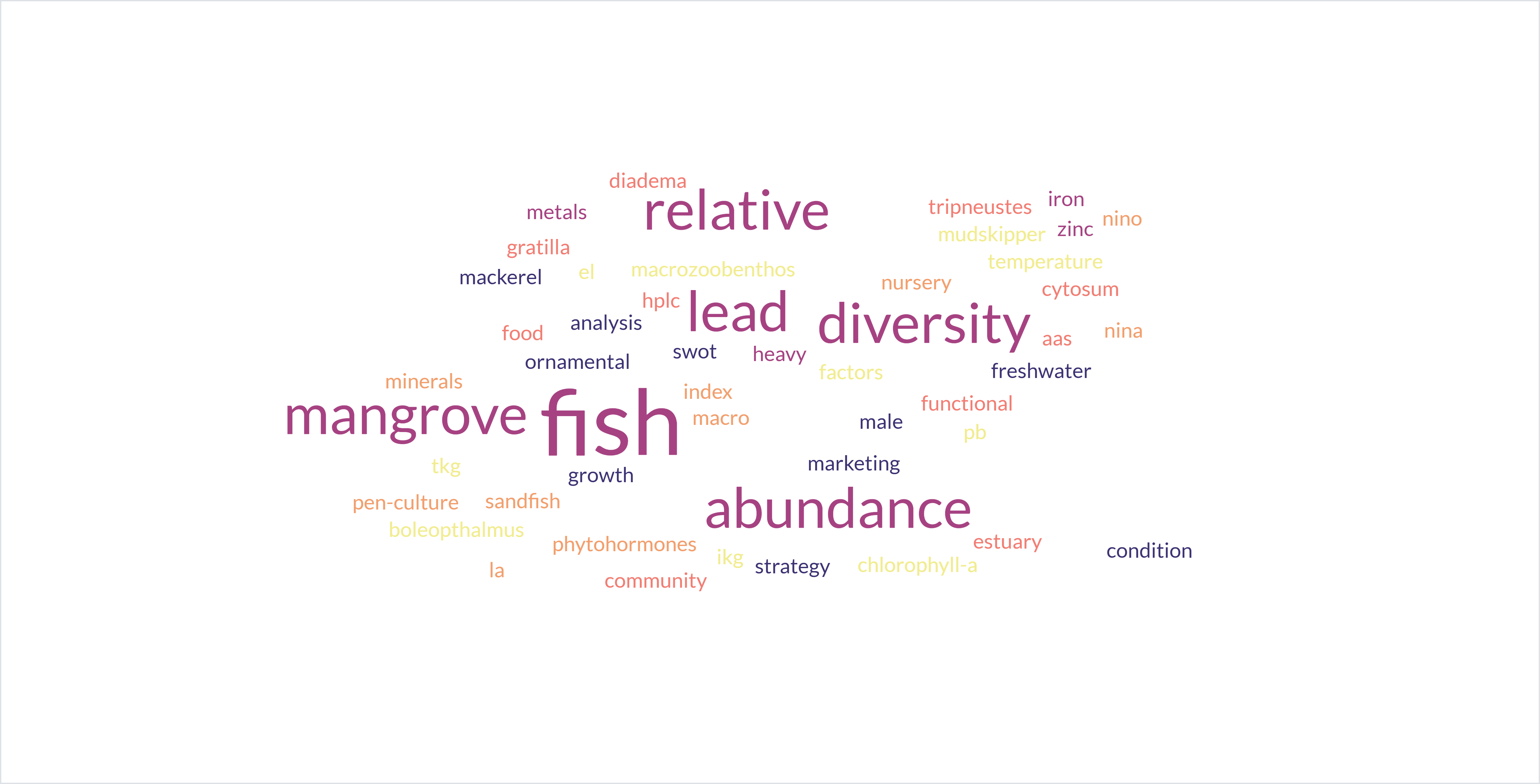Aquatic Pollution Study Based on Analysis of Mollusk Diversity as a Bioindicator
DOI:
https://doi.org/10.35800/jip.v11i2.51420Keywords:
Bioindikator, Moluska, Diversity, PollutionAbstract
This research aims to determine the condition of coastal water quality at Sam Ratulangi University's Marine Field Station by looking at the diversity of mollusks and the physical and chemical parameters of the waters as supporting parameters. The method used to determine the research location was the Quadratic Transect method, while to determine the sampling point the random sampling method was used, namely selecting sampling locations randomly based on areas with dominant activities. The mollusks taken are mollusks that are still alive and can be seen attached, both on the surface of the substrate and inside the substrate. Observations of the place and substrate where the individual attached/immersed themselves were carried out by measuring the water quality, where the temperature was 300C, salinity 28%0, and pH 8). The identification results obtained were 29 types. In the final step after the sample has been identified, all data obtained will be analyzed to obtain results from the research carried out. This research is expected to provide information about the condition of water pollution at Sam Ratulangi University's Marine Field Station in determining management policies and preserving the aquatic ecosystem.
Keywords: Bioindicators, Molluscs, Diversity, Pollution.
Abstrak
Penelitian ini bertujuan untuk mengetahui kondisi kualitas perairan pesisir Marine Field Station Universitas Sam Ratulangi dengan melihat keanekaragaman moluska serta parameter fisika kimia perairan sebagai parameter pendukung. Metode yang digunakan dalam menentukan lokasi penelitian adalah metode Transek Kuadrat, sedangkan untuk menentukan titik pengambilan sampel digunakan metode random sampling, yaitu pemilihan lokasi pengambilan sampel secara acak berdasarkan kawasan dengan kegiatan yang dominan. Moluska yang diambil adalah Moluska dalam keadaan masih hidup yang terlihat menempel, baik di permukaan substrat maupun di dalam subtrat. Pengamatan tentang tempat maupun substrat dimana individu tersebut menempel/membenamkan diri dilakukan pengukuran kualitas air, di mana suhu 300C, salinitas 28%0 dan pH 8). Hasil indentifikasi diperoleh sebanyak 29 jenis. Langkah terakhir setelah sampel diidentifikasi, semua data yang diperoleh akan dianalisis untuk memperoleh hasil dari penelitian yang dilakukan. Penelitian ini diharapkan sebagai informasi tentang kondisi pencemaran perairan Marine Field Station Universitas Sam Ratulangi dalam penentuan kebijakan pengelolaan serta menjaga kelestarian ekosistem perairan.
Kata kunci: Bioindikator, Moluska, Keanekaragaman, Pencemaran.
References
Abbot, R. T. dan S. P. Dance. 1990. Compendium of seashells. American Malacologists, Inc. Melbourne. 411 Hal.
Ainuddin, W. (2017). Studi Pencemaran Logam Berat Merkuri (Hg) Di Perairan Sungai Tabobo Kecamatan Malifut Kabupaten Halmahera Utara. Fakultas Ilmu Kelautan Universitas Naku Tidore Maluku Utara.
Butler, G. C. (1978). Principles of Ecotoxicology Scope 12. New York: John Willey & Sons.
Cappenberg, H. A. W. (2006). Pengamatan komunitas moluska di Perairan Kepulauan Derawan, Kalimantan Timur. Jurnal Oseonologi dan Limnologi di Indonesia, 39, 75-87.
Cesar, H. 1998. Indonesia coral reefs: A precious but threatened resource. In Hatziolos, M.E., Hooten, A.J. and M. Fodor (Eds.), Coral Reefs: Challenges and opportunities for sustainable management. Proceedings of an associated event of the fifth annual World Bank Conference on Environmentally and Socially Sustainable Development. The World Bank. Washington DC. p. 163 – 171.
Fachrul, M. F. (2007). Metode Sampling Bioekologi. Jakarta: Bumi Aksara.
Isdrajad Setyobudiandi, e. a. (2010). Seri Biota Laut Gastropoda Dan Bivalvia : Biota Laut Indonesia. Bogor: STP Hatta-Sjahrir Banda Naira..
Keputusan Menteri Lingkungan Hidup (Kepmen LH) No.51 Tahun 2004. (2004). Baku Mutu Air Laut Untuk Biota. Jakarta.
Krebs, C. J. (1978). Ecology, The Experimental Analysis of Distribution and Abundance. New York, USA: Harper and Row Distribution.
Krebs, (2014). Ecological Methodology (Fourth Edition). Ecology at the University of Canberra and the Biodiversity Center at the University of British Columbia. Canberra.
Nybakken, J. W. (1992). Marine Biology: An Ecological Approach (3rd edition). Dalam Eidman, M., Koesoebiono, K., Bengen, D. G., Hutomo, M., & Subarjo, S. (Terj.), Biologi Laut: Suatu Pendekatan Ekologis. Jakarta, Indonesia: Gramedia Pustaka Utama.
Odum, E. P. (1993). Dasar-dasar Ekologi. Jakarta: PT. Gramedia. (Terjemahan).
Pradnyani, G. A. M. (2018). Kelimpahan dan similaritas gastropoda di Perairan Pantai Melasti dan Segara Samuh, Badung, Bali. Aquatic Science, 1(1), 32-39.
Rachmawati. (2011). Indeks keanekaragaman makrozoobentos sebagai bioindikator tingkat pencemaran di muara Sungai Jenebereng. Jur nal Bionature, 12(2), 103-109
Seaman, W. Jr. and A.C. Jensen. 2000. Purposes and practices of artificial reef evaluation (1 – 19). In Seaman, W.Jr. Artificial reef evaluation, with application to natural marine habitats. CRC Press New York.
Susiana. (2011). Diversitas dan Kerapatan Mangrove, Gastropoda dan Bivalvia di Estuaria Perancak Bali. Skripsi. Makasar, Indonesia: Fakultas Ilmu Kelautan dan Perikanan, Universitas Hasanudin.
Supriharyono. 2000. Pengelolaan terumbu karang. Djambatan. 118 hal.
Tresna, S. (2009). Pencemaran Lingkungan. Jakarta: Rineka Cipta
White, A.T., L.Z. Hale, Y. Renard and L. Cortesi. (Eds.). 1994. The need for community-based coral reef management. Collaborative and community-based management of coral reefs. Lessons from experience. Kumarian Press. 1 – 18 p.
Bengen, D.G., 2000. Teknik Pengambilan Contoh dan Analisis Data Biofisik Sumberdaya Pesisir. Pusat Kajian Sumberdaya Pesisir dan Lautan Fakultas Perikanan dan Ilmu Kelautan Institut Pertanian Bogor. 88 hlm.
Wardani, B. A. K. (2018). Studi Keanekaragaman Moluska Sebagai Bioindikator Perairan di Pantai Sialang Buah Kabupaten Serdang Bedagai Provinsi Sumatera Utara.
Downloads
Published
How to Cite
License
Copyright (c) 2023 Anneke V. Lohoo, Gaspar Manu, Rose O.S.E. Mantiri

This work is licensed under a Creative Commons Attribution-NonCommercial 4.0 International License.
COPYRIGHT
Authors who publish with this journal agree to the following terms:
Authors hold their copyright and grant this journal the privilege of first publication, with the work simultaneously licensed under a Creative Commons Attribution License that permits others to impart the work with an acknowledgment of the work's origin and initial publication by this journal.
Authors can enter into separate or additional contractual arrangements for the non-exclusive distribution of the journal's published version of the work (for example, post it to an institutional repository or publish it in a book), with an acknowledgment of its underlying publication in this journal.
Authors are permitted and encouraged to post their work online (for example, in institutional repositories or on their website) as it can lead to productive exchanges, as well as earlier and greater citation of the published work (See The Effect of Open Access).






































